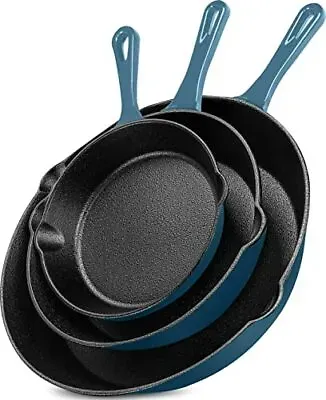
Tips to Prevent Sticky Residue When Seasoning Cast Iron Cookware
Understanding Cast Iron Seasoning and the Common Issue of Stickiness
Cast iron cookware has been cherished by home cooks and professional chefs alike for centuries. Its unparalleled heat retention and even heat distribution make it an invaluable asset in the kitchen. However, many beginners may encounter issues with their cast iron pans, particularly with seasoning and the dreaded stickiness. In this article, we will explore the process of seasoning cast iron cookware, what can cause it to become sticky, and how to resolve these issues.
The Importance of Seasoning
Seasoning is the process of applying oil to the surface of cast iron cookware and then heating it to create a natural, non-stick coating. This layer protects the iron from rust and improves the overall cooking experience by providing a smooth, slick surface for food to glide on. Proper seasoning enhances the durability and performance of cast iron, making it indispensable for various cooking methods, from frying and sautéing to baking.
The best oils for seasoning are those with high smoke points, such as flaxseed oil, canola oil, or grapeseed oil. The key to successful seasoning lies in applying thin layers of oil and heating the cookware in a manner that allows the oil to polymerize, forming a robust non-stick surface.
Why Seasoned Cast Iron Can Become Sticky
If your previously well-seasoned cast iron cookware has turned sticky, it can be concerning and frustrating. There are several common reasons why this may occur
1. Too Much Oil One of the most frequent causes of stickiness in cast iron is the application of too much oil during the seasoning process. When excess oil is baked onto the pan, it can lead to a thick, gummy layer that creates a sticky cooking surface.
2. Low-Temperature Seasoning Not heat cycling your cast iron at high enough temperatures can prevent the oil from properly polymerizing. This can leave a tacky finish instead of the desired smooth surface. Seasoning should typically occur in an oven preheated to around 450°F to 500°F (230°C to 260°C).
3. Incomplete Cleaning If there are remnants of food or old seasoning on the surface, they can contribute to stickiness. Ensuring your cast iron is clean before applying a new layer of seasoning is critical.
cast iron seasoning sticky

4. Humidity Excess moisture in the environment can also impact the seasoning process, leading to a sticky or tacky finish, especially if not dried thoroughly after cleaning.
How to Fix Sticky Seasoning
If you find your cast iron cookware has developed a sticky coating, there are several solutions to restore it
1. Strip the Coating The most effective way to remove sticky seasoning is to strip it back down to the bare metal. This can be done using a combination of a plastic scrubber or steel wool along with mild soap and warm water. Be diligent in scrubbing to remove any sticky remnants, then rinse and dry the pan thoroughly.
2. Re-seasoning After the pan is stripped, it's time to re-season. Apply a thin layer of your chosen oil — remember just a light coating is key. Wipe off any excess oil with a paper towel before placing the pan upside down in a preheated oven. Place a baking sheet or foil underneath to catch any drips.
3. Periodic Maintenance Regular maintenance can help prevent future stickiness. After each use, clean your cast iron with hot water and a brush, avoid soap unless necessary, and dry it thoroughly. Applying a thin layer of oil after each use can help maintain the seasoning.
4. Cooking with High-Fat Foods When re-seasoning or using your cast iron, cooking foods with higher fat content, such as bacon or fatty meats, can help in building and maintaining a non-stick surface.
Conclusion
Seasoning is an essential aspect of caring for your cast iron cookware, and while stickiness can be a common issue, it is easily resolvable. By understanding the causes of stickiness and learning how to season your cast iron properly, you can enjoy the lifelong benefits of this timeless kitchen staple. With a little patience and care, your cast iron will provide you with years of exceptional cooking experiences.
-
Season Cast Iron Perfectly with GPT-4 Turbo TipsNewsAug.01,2025
-
High Quality Cast Iron Cookware - Baixiang County Zhongda MachineryNewsAug.01,2025
-
Premium Cast Iron Pan: Durable & Perfect HeatNewsAug.01,2025
-
High Quality Kitchen Durable Black Round Cast Iron Cookware Pancake Crepe Pan-Baixiang County Zhongda Machinery Manufacturing Co., Ltd.NewsAug.01,2025
-
Cast Iron Cookware - Baixiang County Zhongda Machinery | Nonstick, Heat ResistanceNewsAug.01,2025
-
High Quality Kitchen Durable Black Round Cast Iron Cookware - Baixiang County Zhongda Machinery | Non-Stick, Heat Retention, DurableNewsJul.31,2025


